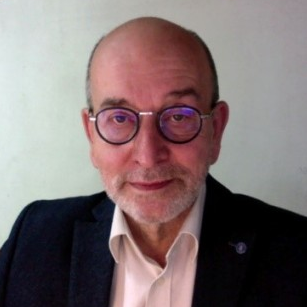Architecture: Integration of Art and Engineering
A special issue of Buildings (ISSN 2075-5309). This special issue belongs to the section "Architectural Design, Urban Science, and Real Estate".
Deadline for manuscript submissions: closed (30 June 2022) | Viewed by 155418
Special Issue Editors
Interests: project engineering and management; decision making; integral design and management; sustainability; research methods in CE and architecture
Special Issues, Collections and Topics in MDPI journals
Interests: flexible interior design; design of inclusive and universal environments; color in architecture
Special Issues, Collections and Topics in MDPI journals
Interests: requirements engineering in architectural design; BIM technology in architectural design; sustainable architecture and infrastructure; prefabrication and modular building; research methods and techniques applied in architecture
Special Issues, Collections and Topics in MDPI journals
Special Issue Information
Dear Colleagues,
Architecture and engineering generate much excitement. New design techniques and methods and implementation results stimulate the interest of researchers, designers, and the public. It is common knowledge that interesting solutions exist at the border of architecture and engineering. We would like to invite you to share your creative and engineering accomplishments. After all, borderline issues are attractive and inspiring.
In the current Special Issue, we pay attention not only to the engineering of architecture itself, but also to beauty, creativity, social aspects in architecture and engineering, and to interior design—thus, not only to cubature architecture.
The problem area at the border of beauty and engineering, or the border of art and technology, is multidimensional. In this issue, we list a few subject groups.
Please note the whole range of evolving design paradigms, including open-source architecture (OSArc) based on imagination, and shaping the universalization of infrastructure. Note the importance of knowledge, including examples of the use of evidence-based design, intelligence-based design, design thinking method, as well as the ways in which quality assessment methods, such as post-occupancy evaluation (POE), building performance evaluation (BPE) are applied in architecture. To what extent are they related to the designer’s creativity?
Presentations of experiences of the use of, among others, integral design and management, BIM and building life cycle modeling (BLCM), 3D to 7D modeling, parametric design, and advanced visualization will be welcome. Digital support for decision-making processes in architecture and civil engineering already has a long-standing tradition worthy of presentation.
As part of sustainability, we suggest paying attention to architectural revitalization and bioclimatic architecture. Cost–benefit analysis (CBA), circular economy (including circular building), building life cycle, and reducing energy consumption in buildings are inextricably linked with those issues.
In the area of interior architecture, we can expect articles in the realm of virtual reality and parametric methods, sustainable and recycling materials in interior design, flexibility, responsibility, experiences in interior architecture, and light and color in interior design.
Two threads are also worth highlighting: the designer’s place in the chain linking architecture, engineering, construction, and operation and maintenance; and public participation in architectural design.
Prof. Dr. Oleg Kapliński
Prof. Dr. Agata Bonenberg
Prof. Dr. Wojciech Bonenberg
Prof. Marco Lucchini
Guest Editors
Manuscript Submission Information
Manuscripts should be submitted online at www.mdpi.com by registering and logging in to this website. Once you are registered, click here to go to the submission form. Manuscripts can be submitted until the deadline. All submissions that pass pre-check are peer-reviewed. Accepted papers will be published continuously in the journal (as soon as accepted) and will be listed together on the special issue website. Research articles, review articles as well as short communications are invited. For planned papers, a title and short abstract (about 100 words) can be sent to the Editorial Office for announcement on this website.
Submitted manuscripts should not have been published previously, nor be under consideration for publication elsewhere (except conference proceedings papers). All manuscripts are thoroughly refereed through a single-blind peer-review process. A guide for authors and other relevant information for submission of manuscripts is available on the Instructions for Authors page. Buildings is an international peer-reviewed open access semimonthly journal published by MDPI.
Please visit the Instructions for Authors page before submitting a manuscript. The Article Processing Charge (APC) for publication in this open access journal is 2600 CHF (Swiss Francs). Submitted papers should be well formatted and use good English. Authors may use MDPI's English editing service prior to publication or during author revisions.
Keywords
- Art
- Construction engineering
- Cubature architecture
- Interior architecture
- Process design
- Design paradigms
- Cost–benefit analysis
- Digitization in architecture and civil engineering
Benefits of Publishing in a Special Issue
- Ease of navigation: Grouping papers by topic helps scholars navigate broad scope journals more efficiently.
- Greater discoverability: Special Issues support the reach and impact of scientific research. Articles in Special Issues are more discoverable and cited more frequently.
- Expansion of research network: Special Issues facilitate connections among authors, fostering scientific collaborations.
- External promotion: Articles in Special Issues are often promoted through the journal's social media, increasing their visibility.
- e-Book format: Special Issues with more than 10 articles can be published as dedicated e-books, ensuring wide and rapid dissemination.
Further information on MDPI's Special Issue polices can be found here.









